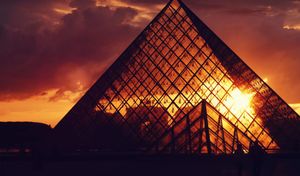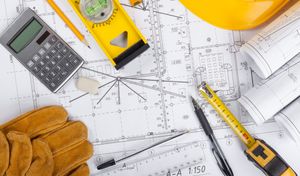The surface area of a cylinder refers to the total area of all its outer surfaces. It includes the area of the two circular bases as well as the curved surface that connects them. Understanding the surface area of a cylinder is crucial in various fields, including engineering, architecture, and manufacturing. In this article, we will explore the formula for calculating the surface area of a cylinder and delve into the differences between the total surface area (TSA) and the curved surface area (CSA).
Surface Area of a Cylinder Formula
To calculate the surface area of a cylinder, we need to consider the areas of the two circular bases and the curved surface that wraps around the cylinder. The formula for the surface area of a cylinder can be derived by summing up these three components:
Where:
- π (pi) is a mathematical constant approximately equal to 3.14159
- r is the radius of the circular base of the cylinder
- h is the height of the cylinder
Let's explore each component in more detail.
Formula: Lateral Surface Area of a Cylinder
The lateral surface area of a cylinder refers to the curved surface that wraps around the cylinder, excluding the areas of the circular bases. The formula for calculating the lateral surface area can be expressed as:
Where:
- π (pi) is a mathematical constant approximately equal to 3.14159
- r is the radius of the circular base of the cylinder
- h is the height of the cylinder
The lateral surface area is an essential component of the total surface area of a cylinder. It represents the area that would be covered if the curved surface of the cylinder were "unwrapped" and laid flat.
Total Surface Area of Cylinder (TSA)
The total surface area of a cylinder (TSA) includes the areas of both circular bases as well as the curved surface that connects them. It is the sum of the areas of the two bases and the lateral surface area. The formula for calculating the total surface area of a cylinder is:
Where:
- π (pi) is a mathematical constant approximately equal to 3.14159
- r is the radius of the circular base of the cylinder
- h is the height of the cylinder
Calculating the total surface area allows us to determine the amount of material needed to cover the entire outer surface of a cylinder, making it a valuable calculation in various industries.
TSA of Cylinder Formula
To calculate the total surface area (TSA) of a cylinder, follow these steps:
- Identify the radius (r) of the circular base and the height (h) of the cylinder.
- Calculate the area of each circular base by using the formula for the area of a circle: πr². Multiply this value by 2 since there are two bases.
- Calculate the lateral surface area of the cylinder by using the formula: 2πrh.
- Add the areas of the two bases and the lateral surface area together to obtain the total surface area.
For example, let's consider a cylinder with a radius of 5 units and a height of 10 units. Plugging these values into the formula, we can calculate the TSA as follows:
Therefore, the total surface area of the cylinder is 150π square units.
Curved Surface Area of Cylinder (CSA)
The curved surface area of a cylinder (CSA) refers to the area of the curved surface that wraps around the cylinder, excluding the areas of the circular bases. It is also known as the lateral surface area. Calculating the CSA is useful when considering the surface area without the circular ends. The formula for the curved surface area of a cylinder is the same as the formula for the lateral surface area:
Where:
- π (pi) is a mathematical constant approximately equal to 3.14159
- r is the radius of the circular base of the cylinder
- h is the height of the cylinder
By calculating the CSA, we can determine the area that would be covered if the curved surface of the cylinder were "unrolled" and laid flat.
CSA of Cylinder Formula
To calculate the curved surface area (CSA) of a cylinder, follow these steps:
- Identify the radius (r) of the circular base and the height (h) of the cylinder.
- Calculate the curved surface area by using the formula: 2πrh.
For example, let's consider a cylinder with a radius of 5 units and a height of 10 units. Plugging these values into the formula, we can calculate the CSA as follows:
Therefore, the curved surface area of the cylinder is 100π square units.
Differences Between TSA and CSA of Cylinder
While the total surface area (TSA) and the curved surface area (CSA) of a cylinder are related, they represent different measurements of the cylinder's surface. Understanding the differences between these two quantities is important for accurate calculations and applications. Here are the key distinctions:
- Components Included: The TSA includes the areas of both circular bases and the curved surface, while the CSA only considers the curved surface area, excluding the bases.
- Measurements: The TSA measures the total area covered by the entire outer surface of the cylinder, including the bases, whereas the CSA measures only the area of the curved surface without the bases.
- Usage: The TSA is commonly used when determining the amount of material required to cover the entire outer surface of a cylinder, such as paint or wrapping. On the other hand, the CSA is useful when considering the surface area without the circular ends, like finding the amount of wrapping paper needed to cover the sides of a cylindrical gift.
- Calculation: The TSA involves summing the areas of the two bases and the lateral surface area, while the CSA is calculated directly using the formula 2πrh.
By understanding these differences, you can choose the appropriate surface area measurement depending on your specific needs and applications.
Common Misconceptions
When it comes to the surface area of a cylinder, there are some common misconceptions that can lead to errors in calculations or misunderstandings. Let's address a few of these misconceptions:
- Forgetting to Include the Circular Bases: Some individuals may overlook the fact that the surface area of a cylinder includes the areas of both circular bases. It is crucial to include these areas in the calculations to obtain an accurate measurement of the total surface area.
- Confusing TSA and CSA: The total surface area (TSA) and the curved surface area (CSA) are often confused or used interchangeably. Remember that the TSA accounts for the entire outer surface, including the bases, while the CSA only considers the curved surface area without the bases.
- Neglecting the Height in CSA Calculation: When calculating the curved surface area (CSA), the height of the cylinder (h) must be considered. Neglecting this factor can lead to incorrect results. Make sure to include the height in the formula 2πrh.
- Misinterpreting the Units: Pay close attention to the units of measurement when calculating the surface area of a cylinder. Inconsistent or incorrect units can affect the accuracy of your results.
Conclusion
Now that we have explored the concept of the surface area of a cylinder, including the formulas for calculating the total surface area (TSA) and the curved surface area (CSA), as well as the differences between them, you have a solid understanding of this important geometric measurement. Remember to double-check your calculations and keep these concepts in mind when applying them to real-world scenarios.

Here are some frequently asked questions (FAQs) about the surface area of a cylinder:
What is the surface area of a cylinder?
The surface area of a cylinder refers to the total area of all its outer surfaces, including the areas of the two circular bases and the curved surface that connects them.
How do you calculate the surface area of a cylinder?
The formula for calculating the surface area of a cylinder is: Surface Area = 2πr² + 2πrh, where r is the radius of the circular base and h is the height of the cylinder.
What is the difference between total surface area (TSA) and curved surface area (CSA) of a cylinder?
The total surface area (TSA) includes the areas of both circular bases and the curved surface, while the curved surface area (CSA) only considers the curved surface area without the bases.
When should I use TSA and when should I use CSA?
Use TSA when you want to determine the amount of material needed to cover the entire outer surface of a cylinder. Use CSA when you want to calculate the area of the curved surface without the circular ends.
What is the formula for calculating the TSA of a cylinder?
The formula for calculating the total surface area (TSA) of a cylinder is: TSA = 2πr² + 2πrh, where r is the radius of the circular base and h is the height of the cylinder.





